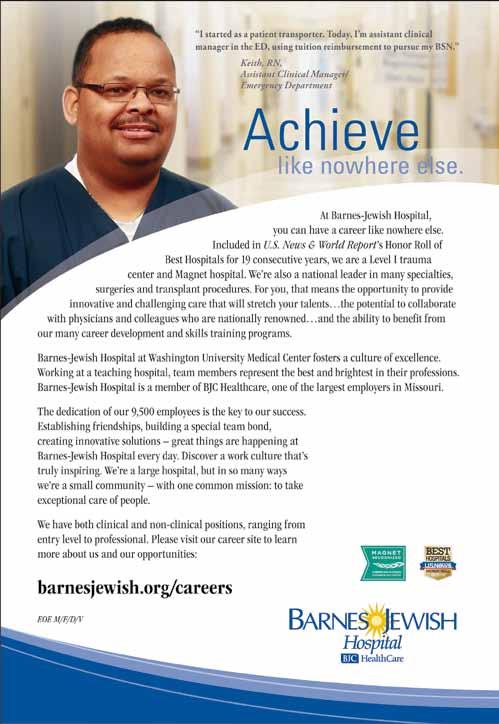Nursing Voice THE







It was a year in the making. Nurses from around the state gathered in Normal, Illinois to usher in the new association for registered nurses in Illinois. Those gathered at this historic meeting voted on bylaws and the legislative platform which will guide the association during its first year.
ANA-Illinois is the professional association for registered nurses in Illinois and focuses on statewide policy and nursing regulation. ANA-Illinois together with our national partner, the American Nurses Association (ANA), is building a community of nurses dedicated to advancing their profession and providing safe, affordable healthcare. We are an organization that advocates for all of nursing – providing a voice for all nurses across all specialties and practice settings. We protect the practice of nursing by ensuring that nursing›s priorities are incorporated into legal and regulatory decisions. We understand what’s important – issues such as oversight of scope of practice, appropriate use of unlicensed personnel and the impact of managed care. We safeguard and promote licensure, credentialing and the right of the profession to define nursing practice.
Assembly attendees also welcomed the first elected board of directors (pictured).
In the afternoon, the members were joined by nursing students from around the region to listen to Joe Roster as he presented “Workplace Violence & Personal Safety for Nurses.” Even though healthcare is only 18% of the workforce almost half of all
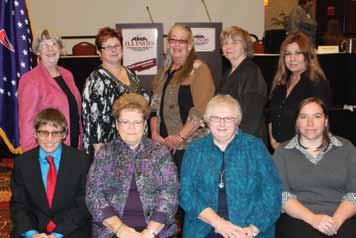
President* 2013-2015 Pam Brown, Ph.D., RN, ANEF
Vice President 2013-2016 Ann O’Sullivan, MSN, RN, CNE, NE-BC, ANEF
Secretary 2013-2015 Sarah Gabua, DNP(c), RN
Treasurer 2013-2016 Dan Fraczkowski, MSN, RN
Director at Large 2013-2016 Karla Luxner, DNP, APN, RNC
Director at Large 2013-2015 Diana Cafi, MSN, MHA, RN, CLNC
Director at Large 2013-2016 Karen Egenes, EdD, RN
Director at Large 2013-2016 Bonnie Salvetti, BSN, RN
Director at Large 2013-2015 Deb Eagan, RN
workplace violence happens in healthcare occupations with nurses bearing the brunt of it. The session was designed to teach nurses from both hospital based and non-hospital based roles how to respond, before, during and after a violent incident.
The Illinois Nurses Foundation hosted a dessert reception to thank everyone for supporting the valuable work that they do throughout the year. The INF has been instrumental in assisting the Illinois Healthcare Action Coalition in becoming a finalist for a $150,000 grant to be awarded by the Robert Wood Johnson Foundation.
The Membership Assembly will continue to meet annually. In 2014, the Assembly will elect a nominations committee to assist with the recruitment of a new slate of officers for 2015. For more information, please visit www.ana-illinois.org
On Sunday Oct 6th the Chicago Bilingual Nurse Consortium (CBNC) honored Carmen Velásquez, founder and Executive Director of Alivio Medical Center, at their annual fundraiser. Carmen Velásquez is a visionary leader and a passionate advocate for Health care reform. For more than 25 years, she has fought for access to health care, especially for undocumented immigrants. She has worked hard to ensure that Alivio has fluent bilingual/bicultural staff and offers quality health care for all. Under her leadership, Alivio has grown from one community health center to a network of 6 clinics with plans to open two new sites later this year.
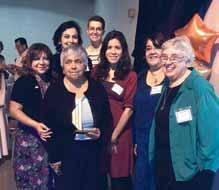
In 2002, Carmen worked with Sister Sheila and Catherine Walsh at Mercy Hospital and Medical Center, Saint Xavier University, School of Nursing and the City Colleges, to resume development of programs to assist immigrant nurses to become licensed in Illinois. At first, programs were offered only to Hispanic nurses living in Chicago who were educated in Mexico, Central or South America (The Chicago Mexican Nurse Initiative). As this initiative grew, other immigrant nurses sought CBNC’s assistance. In 2005, CBNC became a 501(c) (3) non-profit organization that works with all immigrant nurses, regardless of their home country, who are living in the U.S. To date, the consortium has worked with over 600 Internationally Educated Nurses (IENs) from more than 52 countries. It is the only centralized resource for internationally educated nurses in Illinois – and one of the few in the U.S. that offers programs to help IENs resume their nursing careers in the U.S.
This year’s fundraiser was a family event held at Saint Augustine’s College. Community and family members, Board members, CBNC students and graduates, members of the Illinois Hispanic Nurses Association (INHA) and representatives from a variety of health care and educational institutions were in attendance. Sponsors’ of the event included Mercy Hospital and Medical Center, Mercy Foundation, Inc., University of Illinois Hospital & Health Science Systems, Alivio Medical Center, Saint Augustine College, Sinai Health System, Tenet Healthcare and private donors.
Maureen E. Shekleton, PhD, RN, DPNAP, FAAN President, Illinois Nurses Foundation
Dear Illinois Nursing Colleagues,
It is said that we are living in the information age. While it does sometimes seem like we are being overwhelmed with information and that all this information can be a distraction, we depend on information. We need information to make decisions and live our lives in the best way possible.
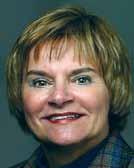
The Nursing Voice – this publication – serves the nursing community in Illinois by providing a conduit for information about nursing events, organizations, and our nursing stories – a voice for nursing. Communication and information sharing promote knowledge and understanding and lead to connection and a sense of community. Why is this important to the Illinois Nurses Foundation?
Communication, connection and community are necessary if the Foundation is to achieve its vision and purpose. The vision is to develop the nursing profession to transform healthcare in Illinois. We want to seek and fund innovative solutions to create a healthier Illinois. The Foundation promotes the health of the public by advancing the nursing profession in Illinois through charitable, research and educational programs. Communication and connection are required to build a donor community which I hope you all will join. Communication, connection and community are needed not only to build an endowment to fund these programs but just as importantly they are also needed to carry out these programs.
An example of how communication, connection and community help implement programs can be found in the Foundation’s work with the Illinois Healthcare Action Coalition (IHAC), the state action coalition working to implement recommendations of the Institute of Medicine (IOM) report, The Future of Nursing: Leading Change, Advancing Health, to transform healthcare here in Illinois. In February, 2011 the IHAC was accepted as part of the Robert Wood Johnson Foundation (RWJF) Campaign for Action. The Foundation was one of the named stakeholders and agreed to work to create a community of foundations that would help find funding
for the action coalition work. In 2013, the IHAC leadership structure expanded and the action coalition applied for a RWJF State Implementation Program (SIP) grant. The Foundation agreed to serve as the fiduciary agent to receive and distribute grant funds. The SIP grant requires that the state provide matching funds and the Foundation has agreed to provide a major share of the matching funds. Communication and connection have been critical as many other groups from the nursing community have stepped up to meet this challenge and provide volunteers and funds for the IHAC initiatives. Communication and connection between the co-leaders (the Illinois Center for Nursing, the Illinois Organization of Nurse Leaders, ANA-Illinois and the Illinois Department of Commerce and Economic Opportunity) and the workgroup chairs has facilitated the creation of work plans and goals that will develop and strengthen the nursing community as it works to lead change to improve health outcomes for Illinois patients, families and communities. Nursing has communicated, connected and come together as a community in this effort – the next phase involves communicating and connecting to collaborate and partner with other communities of interest such as the business community.
It has been three years since the IOM report was published. It remains the most read of all IOM reports – it is a landmark report that has focused a great deal of attention on the important role that nurses play in healthcare but, most importantly, it presents us with an opportunity to create nursing’s preferred future and change the face of healthcare for our patients. Read what leaders have to say about the progress made toward achieving the recommendations of the report on the RWJF Human Capital Blog: http://www.rwjf.org/en/blogs/humancapital-blog.html?bst=human-capital-blog%3aFuture_of_ Nursing_Three_Years&cid=XEM_A7665
To learn more about the IHAC and/or volunteer to participate in this initiative you can use the following link to go to the IHAC webpage: http://www.ana-illinois. org/Main-Menu-Categories/Partners/Illinois-HealthcareAction-Coalition
To donate to the Illinois Nurses Foundation you can use the form in this newsletter or go online to make a secure donation by clicking the donate button at the bottom of the page at: http://www.ana-illinois.org/Main-MenuCategories/Foundation
Thank you in advance for any help you can provide with this initiative to create the future for Illinois nurses and our patients!
INF Board of Directors
Officers
Maureen Shekleton, PhD, RN, FAAN President
Alma Labunski, PhD, MS, RN Vice President
Cathy Neuman, MSN, RN, CNAA Secretary/Treasurer
Directors
Cheryl Anema, PhD, RN
Maria Connolly, PhD, CNE, ANEF, FCCM
P. Joan Larsen, RN
Karen Egenes, EdD, MSN, MA, RN
Linda Olson, PhD, RN, NEA-BC
Lauren Mardirosian, BSN, RN 2012-2013 ANA-Illinois Board of Directors
Officers
Pamela Brown, PhD, RN President
Ann O’Sullivan, MSN, RN, CNE, NE-BC, ANEF Vice President
Dan Fraczkowski, MSN, RN Treasurer
Sarah Gabua, DNP(c), RN Secretary
Directors
Diana Cafi, MSN, MHA, RN, CLNC
Deb Eagan, RN
Karen Egenes, EdD, MSN, MA, RN
Karla Luxner, DNP, CNS, RN-C
Bonnie Salvetti, BSN, RN
Editorial Committee
Editor Emeritus
Alma Labunski, PhD, MS, RN
Chief Editors
Lisa Anderson-Shaw, DrPH, MA, MSN
Karen Mayville, MSN, PhD, RN
Members
Cheryl Anema, PhD, RN
Margaret Kraft, PhD, RN
Linda Olson, PhD, RN, NEA-BC
Executive Director
Susan Y. Swart, MS, RN, CAE
ANA-Illinois/Illinois Nurses Foundation
Article Submission
• Subject to editing by the INF Executive Director & Editorial Committee
• Electronic submissions ONLY as an attachment (word document preferred)
• Email: info@ana-illinois.org
• Subject Line: Nursing Voice Submission: Name of the article
• Must include the name of the author and a title.
• INF reserves the right to pull or edit any article / news submission for space and availability and/or deadlines
• If requested, notification will be given to authors once the final draft of the Nursing Voice has been submitted.
• INF does not accept monetary payment for articles.
Article submissions, deadline information and all other inquiries regarding the Nursing Voice please email: info@ana-illinois.org
Article Submission Dates
(submissions by end of the business day)
January 15th
April 15th
July 15th
October 15th
Advertising: for advertising rates and information please contact Arthur L. Davis Publishing Agency, Inc., 517 Washington Street, P.O. Box 216, Cedar Falls, Iowa 50613 (800-626-4081), sales@ aldpub.com. ANA-Illinois and the Arthur L. Davis Publishing Agency, Inc. reserve the right to reject any advertisement. Responsibility for errors in advertising is limited to corrections in the next issue or refund of price of advertisement.
Acceptance of advertising does not imply endorsement or approval by the ANA-Illinois and Illinois Nurses Foundation of products advertised, the advertisers, or the claims made. Rejection of an advertisement does not imply a product offered for advertising is without merit, or that the manufacturer lacks integrity, or that this association disapproves of the product or its use. ANA-Illinois and the Arthur L. Davis Publishing Agency, Inc. shall not be held liable for any consequences resulting from purchase or use of an advertiser’s product. Articles appearing in this publication express the opinions of the authors; they do not necessarily reflect views of the staff, board, or membership of ANA-Illinois or those of the national or local associations.

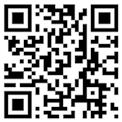
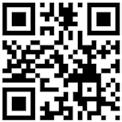
Karen Kelly, EdD, RN, NEA-BC
Founding President, ANA-Illinois
ANA-Illinois celebrated its first birthday on October 1, 2013, and held its first membership assembly in October. Among the accomplishments and milestones achieved in ANAIllinois’ first year:

Karen Kelly
• ANA-Illinois, collaborating with ISAPN and other nursing organizations, made progress by successfully supporting legislation that expands the scope of practice of APNs, although the new law falls short of eliminating written collaborative practice agreements.
• Grassroots action saved the nursing faculty fellowship grants and the competitive nursing grants.
• The new nursing license plate was approved and, if enough nurses request the plates, there will be a continuing source of funds to the Illinois Nurses Foundation for scholarships.
• Nursing was the only health profession to support the use of medical marijuana which will be highly regulated but will provide a legal therapy for those with severe side effects from chemotherapy and provide another form of pain relief for selected patients for whom nurses care.
• ISAPN and ANA-Illinois now share an executive director, Susan Swart, MS, RN, CAE, who manages daily operations of both growing nursing organizations.
• The Illinois Coalition of Nursing Organizations (ICNO) continues to develop to create an effective channel for action by nursing related to legislative and policy issues.



• ANA-Illinois, along with IONL, joined the Illinois Center for Nursing as part of the co-leadership team of the Illinois Healthcare Action Coalition (IHAC: http://ana-illinois.org/Main-Menu-Categories/Newsand-Events/News/IHAC.html). As this article goes to the publisher, IHAC is a finalist for a $150,000 2-for-1 matching grant to further the work of IHAC to implement the recommendations of the Institute of Medicine’s 2010 study: “Future of Nursing, Leading Change, Advancing Health.” By the time you read this issue of “Nursing Voice,” IHAC leadership will know if IHAC has been awarded this grant by the Robert Wood Johnson Foundation. Susan Swart, ANA-Illinois executive director, serves on the executive council of IHAC. As president of ANA-Illinois, I serve as chairperson of the practice workgroup and serve on the IHAC coordinating committee; several ANA-Illinois members serve on the workgroups. The various workgroups, including practice, leadership, education, and collaboration, have developed projects to facilitate the implementation of the IOM study recommendations.
Despite all this positive change, the last 18 months have been an emotionally trying experience for many nurses who were longtime members of their state nurses association. The transformation that resulted in the creation of ANA-Illinois was the product of the changing health care and collective bargaining environments, along with the many changes occurring within the profession of nursing and among its members. As we know from our nursing experiences, change is inevitable and sometimes painful. But change often brings new ideas, new opportunities, and new people into an organization. Several of the changes noted above were possible only because of the changes that transformation brought with the creation of ANA-Illinois.
In my first President’s Message nearly two years ago in another publication, before this transformation was in process, I spoke about the need for nursing to




speak with one strong voice in Illinois to lawmakers and policymakers. As the work of IHAC moves forward to bring to life the recommendations of IOM study on the future of nursing, as ICNO expands to include more nursing organizations, and as the many collaborative efforts between and among nursing organizations grow and mature, nursing is speaking and acting often with one strong voice in Illinois. For example, the practice workgroup of IHAC with survey advanced practice nurses in Illinois in early 2014. Since the state has not been able to collect adequate workforce data on nurses in general, but especially advanced practice nurses, the nursing community, through IHAC, is stepping up to the plate to take on this critical task. This data will be useful as the nursing community works together on revising the Illinois Nurse Practice Act in advance of the 2017 Sunset of the practice act. Another example of this collaborative effort is the efforts of the Education Workgroup of IHAC, collaborating with the deans and directors of associate degree and baccalaureate/higher degree programs, to improve the transition of ADN graduate into baccalaureate and higher degree programs. This will strengthen the nursing workforce in a transformed health care system, consistent with the IOM study’s recommendation that 80% of the nursing workforce hold a BSN by the year 2020.
The 2017 Sunset will be a critical time for nursing in Illinois. There are those outside of the profession of nursing who continue to seek to redefine nursing to fit their vision for the future of the health care system. To ensure that nurses, from the newly licensed staff nurse to the experienced advanced practice nurse, practice at the highest levels of their education and training, as recommended in the IOM report, the nursing community will need to work together to develop a new nurse practice act that supports this recommendation. This work is facilitated by Illinois nursing organizations; they have been an integral part of the Sunset process in the
President’s Message continued on page 4

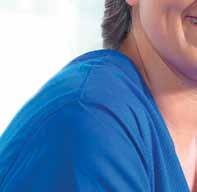



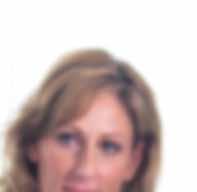






PhD, RN, FAAN, CEO NLN; Ann O’Sullivan, MSN, RN, CNE, NE-BC, ANEF; Dr Marsha Adams, President NLN
President’s Message continued from page 3
past. Nursing organizations depend on active members to get the work of the organization done. Studies on nursing organization membership indicate that a minority of nurses belong to one or more professional nursing organizations, ranging from 10 to 45%. My own national survey from about 20 years ago* indicated that about 42% of those surveyed held membership in one or more nursing organizations. Be part of the loud voice of nursing in Illinois. Join ANA-Illinois ( http://ana-illinois.org/ Main-Menu-Categories/Membership/JoinRenew) to have a voice in shaping the future of nursing in Illinois and in the nation. Also consider membership in a specialty nursing organization related to your clinical or role specialization in nursing. Be an active member of the nursing community; be part of the strong voice of nursing. It has been my distinct honor to serve as president of ANA’s affiliate in Illinois for the last two years, especially ANA-Illinois in the last year. I am proud of the work done by the entire leadership team, the board of directors and our executive director, Susan Swart, in shaping our new organization. We have grown in our first year and we will continue to grow to serve the needs of nurses and to address issues of related to the regulation of nursing. I have now turned over the presidency of ANA-Illinois to Dr. Pam Brown, the new president. I know she will lead the organization well. I hope to see the membership numbers of ANA-Illinois and other nursing organizations in Illinois continue to grow as the nursing community moves to implement the recommendations of the IOM study and to prepare for Sunset in 2017.
* (Kelly) Schutzenhofer, K., & Musser, D.B. (1994). Nurse characteristics and professional autonomy. Image: Journal of Nursing Scholarship, 26, 201-205.
Marie Lindsey Spirit of Advanced Practice Nursing Award was presented to Teresa Valerio, DNP, APN, FNP-BC, CBSM
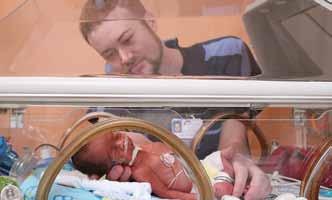
Dr. Valerio’s contribution to the ISAPN Board of Directors can be summed up in two words, commitment and endurance. She was the first person to assume he student member role on the Board in 2002, and followed that role by serving as Region 3 Chair, then Treasurer, and finally as Vice-President. She has performed in each role with diligence, wisdom, rationality, and grace. She has advocated for APNs on a political level in both Springfield and Washington, DC, and also on professional level when she worked as a nurse practitioner at OSF St. Francis Medical Center and now as the head of the DNP program at the Mennonite College of Nursing at Illinois State University. Furthermore, she is considered a leader in the area of sleep medicine becoming the first NP to be board-certified in the practice of Behavioral Sleep Medicine by the American Board of Sleep Medicine in 2012.

Laura Frantz –RUSH UNIVERSITY, COLLEGE OF NURSING Centennial Scholarship
Jennifer Woo –LOYOLA UNIVERITY CHICAGO – MARCELLA NIEHOFF SCHOOL OF NURSING Arthur L. Davis Scholarship
Victoria New –LOYOLA UNIVERITY CHICAGO – MARCELLA NIEHOFF SCHOOL OF NURSING Centennial Scholarship
Jacqueline Garreau –LOYOLA UNIVERITY CHICAGO – MARCELLA NIEHOFF SCHOOL OF NURSING Sonne Scholarship
Megan Ryan –LOYOLA UNIVERITY CHICAGO – MARCELLA NIEHOFF SCHOOL OF NURSING Dr Wendy Burgess Memorial Scholarship
ISAPN owes a huge debt of gratitude to any member who gives so much time and effort in promoting the organization and advanced practice nursing. It would be an honor to have Dr. Valerio receive the award that bears my name.
Teresa Valerio was nominated by Marie Lindsey, PhD, APN/CNP and Laura Tucco APN, CNP
The ISAPN Member of the Year Award was awarded to Peter Kale, APN, CNP
Laura Yach –SAINT XAVIER UNIVERSITY SCHOOL OF NURSING South Suburban Nursing Scholarship
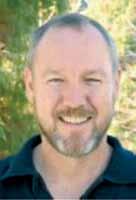
Long before ISAPN was conceived, Pete Kale was an active advocate for APNs in Illinois. He was one of several people who participated in the negotiation process that resulted in APNs finally being recognized in the Illinois Nurse Practice Act in 1998. Buoyed by that success, APNs in Illinois realized that continuing the momentum for the expansion of their practice would require a professional organization geared specifically to their needs and interests. Thus, Pete served on the steering committee that was formed to lay the foundation of what would become ISAPN. Once ISAPN was officially born, Pete served several positions on Board of Directors, first as Chair of Region 4 for two years (2002-2004), then later as Chair of the Membership and Marketing Committee (2004-2006) and also as President (2006-2008).
Pete’s advocacy for APNs extends into the workplace. He has been an adult nurse practitioner at Carle Clinic in Urbana since 1992 and has served as the leader of the APN group for many of those years, a role that has earned him respect among physicians as well as his peers. Pete has precepted countless NP students and urged each and every one of them to join ISAPN.
Peter Kale was nominated by Marie Lindsey, PhD, APN/CNP

ANA-Illinois is pleased to announce the selections for the Scope of Practice Issues in a Changing Health Care Environment Expert Panel.
Pam Brown, RN, BSN, MS, PhD; ANEF –Blessing Rieman College of Nursing
Sue Carlson, RNC, CNS-BC, MSN, DNPc –Mount Sinai – OB education
Deena Nardi, PhD, PMHCNS-BC, FAAN –University of St Francis
Kelly Fugate, ND, RN, HSMI – Soyring Consulting
Jeanne Little, MSN, APN – Rush University CON
Ann O’Sullivan, RN, MSN, NE-BC, CNE, ANEF –Blessing Rieman CON
Beth Ann Christopher, MS, RN –Rush University CON
This expert panel will advise ANA-Illinois on policies and positions pertaining to scope of practice issues facing registered nurses in the era of health care reform. We received numerous applications which were reviewed based on the criteria in the original call for applications. The expert panel will do a critical analysis of the topic and will be free to survey or involve other nursing colleagues to provide additional information, feedback, and advice to ANA-Illinois and the Expert Panel. Broad involvement of the nursing community is necessary to ensure sufficient rigor while also allowing for broad feedback from a full range of practice arenas. Ann O’Sullivan, RN, MSN, NE-BC, CNE, ANEF will serve as lead for the Expert Panel. Thank you to everyone who promoted this application opportunity. The successful outcome and caliber of the applicants is a testament to your efforts. We will certainly keep the nursing community apprised as this work moves forward.
IIllinois Society for Advanced Practice Nursing recently had its annual conference in Peoria. It was a great opportunity to learn, network, and yes, even to do our share of laughing and filling up our spirits!
The conference is always a venue to learn… to listen and absorb, and yes even to test our skills. This year afforded attendees a wide range of topics from acute care to chronic care and the infant to aged.
There were opportunities that teased any of us, from the novice APN to the most experienced by offering programs: to develop research, to learn about asthma related devices, to practice suture techniques, to become familiar with basic radiology (as well as a focus on certain exams), and a lecture/workshop on common office skin procedures. Furthermore there were programs that addressed issues along the aging spectrum and from acute care to chronic care, as well as offer programs on a wide variety of pharmacology subjects.
We had an opportunity to hear about topics to foster our professional growth through DNP programs, as well as a talk on law school for APNs. Likewise we had a seasoned APN discuss the importance of teaching healthcare policy and advocacy and mentoring future APNs.
We also had abundant opportunities to develop our knowledge base on what is happening with healthcare in Illinois, how to promote patient centered care, and to learn about the Affordable Care Act and how it may affect APN practice.
We enjoyed spending time with our exhibitors who so graciously supported our event. We always enjoy networking with them and learning about new opportunities and products.
Our members attended the Annual Business Meeting, participating in decisions about our organization. Retiring BOD members were thanked for their commitment and time to the BOD. We welcomed and inducted several new BOD members.
As is our practice, to give back to the community in some way, this year we were very fortunate that a local comedy club: The Juke Box Comedy Club sponsored


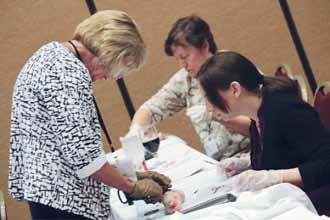
an event wherein we were able to donate proceeds to the HMPRG. The Health and Medicine Policy Research Group is an organization that promotes social justice and challenges inequities in healthcare. HMPRG is an independent policy center that has been a staunch supporter of APNs! Not only were we able to donate funds to the HMPRG by participating in this event, but we were able to laugh and nourish our spirits!
Not only did we laugh at this conference, but we sang!!! Our PAC event this year was an evening of Karaoke! Despite some of us being petrified of microphones, let alone singing, we managed to have a productive PAC fund raising event!
At the annual meeting we inducted our new board members. We are pleased to announce the 2013-2014 ISAPN Board of Directors.
President Mary Barton, APN, ANP-BC, GCNS-BC
Vice-President Melissa Ilg, APN, ANP-BC, FNP-BC
Secretary Suzanne Herrera APN-BC
Treasurer Dr. Ricki Loar, PhD, APN, CNP, FNP-BC, GNP-BC
Program Chair Theresa M. Boley, APN, FNP, CCRP
Government Relations
Chair Dr. Michele Knappe, DNP, APN-BC, ACNP-BC, CEN
Membership Chair Dr. Lisa Young, DNP, APN, FNP-BC
Marketing Chair Michelle Campbell, APN, FNP-BC, CCRN-CSC
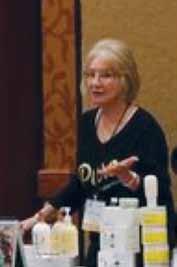
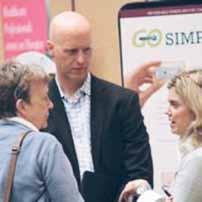

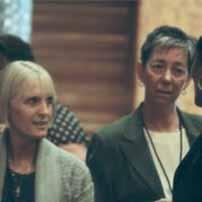
Region 1 Chair Stephanie D. Crawford, APN, CNP, ANP-BC
Region 2 Chair Dr Katherine Lechner, ND, APN, FNP-BC
Region 3 Chair Dr. Phillis A. Dewitt, APN
Region 4 Chair Beth Mathews, APN, FNP-BC
Region 5 Chair Virginia (Ginger) L. Behrhorst, APN-BC
Region 6 Chair Dr. Denise L. Orrill, DNP, APN, FNP-BC
Region 7 Chair Mary Ware APN
Student Representative Shannon Holthaus, RN, BSN, CMSRN
CNM Rep Jolene M. Hamann, APN, CNM
CNP Rep Dr. Michelle DiGiovanni, PhD, APN, CNP
CNS Rep Diane Ryzner, APN, CNS
CRNA Rep Susan McMullan, APN, CRNA
Executive Director Susan Y Swart, MS, RN, CAE
We had three very full days of networking, learning, and yes, having a great time!
Hope to see you at ISAPN MWC 2014 to be held in Naperville, Illinois October 9-11, 2014! It will be our pleasure to offer you some APN hospitality!
Prepared by Mary Barton, ISAPN President
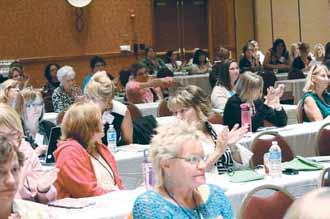
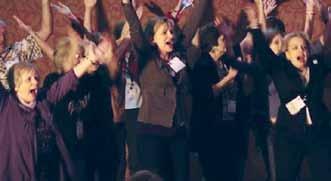

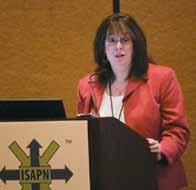
Dr. Lisa A. Young, DNP, APN, FNP-BC
On October 1, 2013, Pam Robbins and I had the distinct honor of standing with Governor Pat Quinn along with other influential health professionals, legislators, and community activists as Illinois rolled out its Health Insurance Marketplace, also known as the State Health Exchange. In spite of the distractions of this day related to government shutdowns, there was no overshadowing of the greatness on this day, occurring throughout the country. The State of Illinois has named its health marketplace: Get Covered Illinois. As the websites and phone lines opened, they were flooded with inquiries and individuals waiting to sign up. October 1, 2013 will be remembered as the day healthcare and its payment system was reformed to provide health insurance to those who need it most, working Americans and the uninsured. Although most would agree that health is a basic human need, and should be a right for all Americans, this has not been the case. There are more than a million people uninsured in Illinois. The new marketplace aims to provide health insurance to 300,000 during the initial open enrollment period. The initial open enrollment for the Illinois marketplace began on October 1, 2013 and will continue until March 31, 2014.
The largest group of uninsured includes young adults (often called the young invisibles), full or part time employees working at businesses that do not offer insurance, those who have lost coverage, individuals who were unable to afford health insurance, and those who have had a pre-existing condition. The marketplace will provide individuals and small business employees accessibility to affordable health insurance coverage. Individuals who sign up for insurance by December 15, 2013 will have effective coverage on January 1, 2014. In addition, there will be special enrollment periods for certain life events such as changes in income, family size, loss of job coverage, or moving to a new state.
Beginning in 2014, individuals who do not obtain coverage will have to pay a tax penalty. In some cases, certain groups of uninsured may not have to pay a penalty. Some of these groups include certain religions, members of a federally recognized Indian tribe, and those insured less than three months out of the year. Although it is considered affordable health care, a person whose income is very low that coverage is considered unaffordable may not have to pay the fee and may also be without coverage. The tax penalty for 2014 is 1% of the individual’s income or $95.00 per year, whichever is higher. This means that these individuals will be without health insurance and will be financially responsible for 100% of their medical care. Contrary to what most people believe, everyone may not be covered. However, the majority will have some form of health insurance.
The State of Illinois has chosen to participate in a state partnership with the federal government. As a state partnership, the state will carry out plan management or consumer assistance for individuals and small group markets. Illinois may elect to use


part of the federal government services for Medicaid and Children Health Insurance Plans (CHIP) eligibility.
What does this all mean for new consumers of health care? This means that individuals who were unable to afford quality health insurance may now be able to have access to quality, affordable health care. This includes high quality, low cost, and in some cases no cost health insurance. Insurers will be unable to increase premiums for health issues such as pregnancy, disability, or gender. Insurance carriers will also be required to reinvest 80-85% of their profits back into the plan for improvements and enhancements of the plan. Denials of insurance for pre-existing conditions have been eliminated. Adult children can now continue coverage under their parents’ insurance plan until the age of 26, even if they are married. There are limitations on out of pocket expenses and no lifetime maximums for coverage. Immunizations, preventative care, and women’s screenings will be covered.
Interested consumers can go to the Getcoveredillinois.gov website and answer several prescreening questions such as name, date of birth, income, and social security number for each individual applying for coverage. To be eligible, individuals must be a U.S. citizen or national, and not incarcerated. The cost of insurance will be affected by age, household income, residence, tobacco use, and the type of insurance that is purchased. Some Illinois residents may be able to request a discount on their monthly premium based on income. Individuals and families living below 133%-400% of the poverty level may receive subsidies, sliding scales, and discounts when insurance is purchased through the marketplace. The change in the poverty level qualifies individuals who previously were not eligible for Medicaid to now be eligible. Since Medicaid is based primarily on income, these individuals may go to GetcoveredIllinois.gov to determine coverage.
The marketplace provides a premium cost comparison of plans and give the consumer choices. It provides a one stop shop to compare the over 165 plans to the initial bench mark plan selected by the state for competitiveness, quality, and cost. The state plan’s options include various levels of plans, referred to as the metal plans. The lowest cost plans are bronze and the high end plans are platinum. The metal plans include the following coverage: Platinum plan, 90% coverage; Gold Plan, 80% coverage; Silver Plan, 70% Coverage; and a Bronze Plan providing 60% coverage. The larger the monthly premium the more the coverage and the less out of pocket expense. The lower the monthly premium the higher the out of pocket expense such as co pays or deductibles. Illinois currently has eight insurers, offering 165 plans from which to choose at the state marketplace. Those interested in coverage can go to the GetcoveredIllinos.gov website, chat on the website, or call for information at the toll free number 1-866-311-1119. There are several free standing community partner sites that can be visited for assistance. There will be approximately 1200 trained specialists called navigators who will help Illinois residents understand the various plans that are available for selection and comparison. All plans must cover ten essential benefits. These include:
• Outpatient services: Services and tests done at a medical center or doctor’s office.
• Emergency services: Medical care given to treat a sudden or unexpected illness during an emergency.
• Hospitalization: Tests or surgery that require the individual to stay overnight in the hospital.
• Maternity and newborn care: Care during pregnancy and after delivery, including breastfeeding.
• Mental health and substance use disorder services: Services include treatment for behavioral, mental illness, or substance use problems.
• Prescription drugs: Filling of prescriptions.
• Rehabilitative services and devices, including physical therapy.
• Laboratory services: Tests done to diagnose an illness or problem.
• Preventative and wellness services and chronic disease management.
• Screenings: Include monitoring and education regarding treatment.
• Pediatric care: Includes medical, dental, and vision care for children.
• Dental coverage for adults: Will be available through the Health Insurance Marketplace at an additional cost.
Coverage of essential benefits supports patients’ understanding of the importance of preventative health care by focusing on staying well. In addition, nurses will have an opportunity to do what we do best, which includes preventative health care, patient advocacy, and education. Additional opportunities as payment reform models develop will include innovations in practice, and increased demands for primary care providers. This will increase the need for inclusion of advanced practice nurses, particularly nurse practitioners to deliver the care to the newly insured. There will be increased needs for advanced practice nurses to be included in provider networks, leaders of accountable care organizations, and medical homes. Several research studies have supported the cost effectiveness, quality, improved outcomes, and safety of advanced practice nurses. Changes in scope of practice throughout the country will allow APNs to practice to the full extent of their education and training will be critical.
This is a great time in our health history and particularly for nursing and our patients. We should embrace this time to do what we do best by maintaining the health of our patients through prevention and education and assisting our patients to understand how they can obtain affordable health care through the Affordable Care Act and the new Marketplace. Nurses should become active on advisory boards and work with local government to inform the public of the changes to health care under the Affordable Care Act and how to obtain affordable insurance through the marketplace.
As you direct your patients to go to GetcoveredIllinois.gov or other affordable health care sites, remember the importance of your role with advocacy. Get involved through one of the many professional nursing organizations so you too can have a voice in health care. As nurses, let us work to get the word out on how the uninsured can access health. Nurses can be champions for health and for our patients.

Lauren Mardirosian, BSN, RN
Throughout my undergraduate nursing education every professor of mine emphasized the importance of professional development and being a member of you state nursing organization. They discussed the benefits afforded to us as nurses of being involved with a network of fellow nurses at a local, state and national level. The piece that I found was missing from those conversations, however, was what to do once you became a member! After I passed my NCLEX in the summer of 2010, I immediately signed up for American Nurses Association (ANA), ANA-Illinois (formally known as Illinois Nurses Association, INA) and Academy of Medical-Surgical Nurses (AMSN), the specialty organization for medical-surgical nurses. AMSN had a local Chicago chapter, so I was able to quickly become involved in that organization on a local level. But with ANA being at a national level and ANA-Illinois being a state-wide organization, I was unsure how best I could become involved in these organizations – through committee involvement, attending membership assembly meetings, helping to lobby in Springfield? I was not sure where I would best be able to contribute. While browsing the ANAIllinois website, I saw an opportunity to join the ANA-Illinois Mentorship Program. This program partners new nurses and new ANA-Illinois members with a mentor to provide the opportunity to form a one-on-one connection with an experienced, longer-term ANA-Illinois member. The Mentorship Program Coordinator seeks to pair you with a mentor that has experience in areas that are of interest to you. For example, being a new medical-surgical nurse who was interested in helping to implement electronic records at my hospital and being involved in an ANA-Illinois committee, I was partnered with a mentor that is a Board of Director, a previous medical-surgical RN, and is now working in the specialty of nursing health informatics. My mentor helped me to better understand the association’s involvement in nursing programs, policy and legislation, and made suggestions, based on my strengths and interests, as to where I could best get involved with ANA-Illinois. It just so happened that during the time I was sharing with my mentor an interest to become more involved in an ANA-Illinois Committee, a Board member was resigning due to her moving out of state. My mentor encouraged me to submit a consent to serve form to fill the empty position, since the Board was looking for newer nurses and younger members to provide a diversity of perspective to its Directors. If not for my mentor’s encouragement and support, I never would have thought to apply for such a position! I was welcomed with open arms to the Board and my fellow Directors were very supportive and patient during those first few months as I oriented myself to my new position. During my one year term as Director at-large, I have had the opportunity to learn about the importance of strong board governance in order to facilitate a strong and healthy organization. I am so grateful to the Mentorship Program in helping me get my foot in the door on involvement with ANA-Illinois. I plan on continuing my active participation with ANA-Illinois through involvement on various committees. I encourage all nurses who are new members to ANA-Illinois, whether you are a new graduate nurse or an experienced nurse who is a new member to our organization, to apply to the ANAIllinois Mentorship Program in order to foster a fulfilling and a mutually beneficial relationship with your State-wide professional nursing organization, ANA-Illinois.
For more information on the ANA-Illinois Mentorship Program visit the webpage: ANA-Illinois.org or contact Dan Fraczkowski, Mentorship Program Coordinator, by e-mail: dfraczkowski@yahoo.com

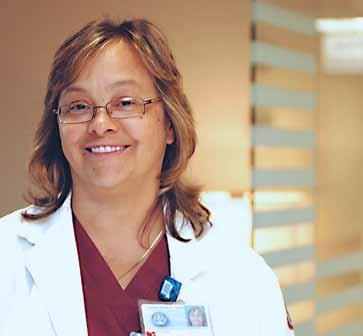

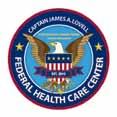
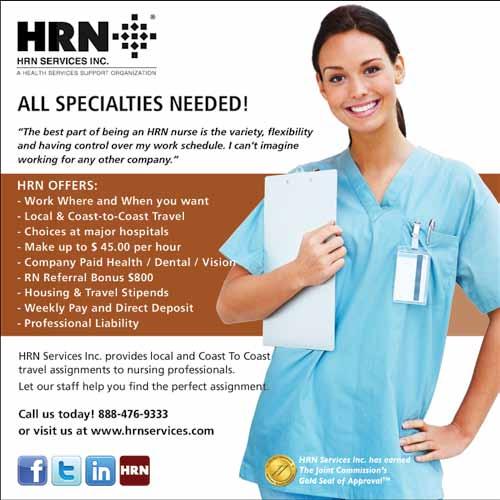
The Illinois Organization of Nurse Leaders (IONL) hosted their 2013 annual conference and business meeting in Lisle, Illinois on September 26th & 27th. Over 150 people attended the very successful event. The association was proud to bring to the audience, keynote speakers from Massachusetts who were able to describe their experience with health care reform. Patricia M. Noga, PhD, RN, MBA, NEA-BC, and Sharon Gale MSN, RN, have lived through Massachusetts’ health care reform, of which the Affordable Care Act (ACA) is modeled. They were able to tell nurse leaders what to expect while we are preparing for the ACA. Trish Anen Vice President, Clinical Services at Metropolitan Chicago Healthcare Council and Molly Harper Project Coordinator, Clinical Services also from MCHC gave a presentation on Patient Safety Organizations (PSO) and their importance in the ACA.
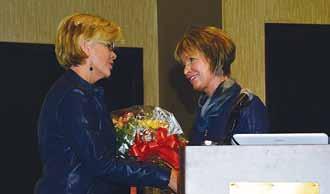
IONL was pleased that Dr. Michelle Janney could take time out of her busy schedule to share her thoughts on what nurse leaders need to know in today’s changing environment. Michelle is the current president of the American Organization of Nurse Executives and Senior Vice President and Wood-Prince Family Chief Nurse Executive, at Northwestern Memorial Hospital.
The conference also focused on accountable care organizations (ACO) and their role in patient transition. Dr. Susan Campbell is the senior vice president and chief nursing officer for Advocate Health Care. She shared her organization’s role in an ACO. Also from Advocate was Marlene Bober who discussed patient transitions. Tammy Duvendack, RN, PhD Vice President Care Transformation, UnityPoint Health-Methodist discussed the navigation of patients across the continuum. All had wonderful insights into the ACO and patient transition world.
Dr. Kimberly Glassman brought the most sentimental presentation that touched the hearts of everyone in the room. Kim is the chief nursing officer at NYU Langone medical center. Her center evacuated the hospital including 60 infants from NICU during Hurricane Sandy. There was not a dry eye in the room!
President Obama called her the day after the evacuation to extend his thanks. It was a fantastic two days for everyone who attended!


This scholarship is administered by the Illinois Department of Public Health (IDPH) Center for Rural Health. The annual application period is between March 1 through May 31. This is a direct link to the IDPH Center for Rural Health: http://www.idph.state.il.us/about/rural_ health/rural_scholarship.htm
The 2014-2015 academic year application will not be available until March 1, 2014. This program provides assistance to individuals pursuing a certificate in practical nursing, an associate degree in nursing, a hospital-based nursing diploma, a baccalaureate degree in nursing or a graduate degree in nursing. In 2006, the law was modified, expanding the NESP to accept graduate nursing students. Distribution of scholarships:
• At least 40 percent for students pursuing a baccalaureate degree in nursing
• At least 30 percent for students pursuing an associate degree or a hospital-based diploma in nursing
• At least 20 percent for students pursuing a graduate degree in nursing
• At least 10 percent for students pursuing a certificate in practical nursing
The Nursing Education Scholarship Program is authorized by the Nursing Education Scholarship Law, 110 ILCS 975/ and has been in place since 1993 with a goal of increasing the number of nurses available for employment in Illinois by offering scholarships to overcome financial barriers to education.
You may call 1-217-782-1624, or TTY (for hearing impaired only) 1-800-547-0466, to request that an application be emailed or mailed to you. Applications may also be available at your school’s financial aid office.

Susana Gonzalez, RN, MSN, MHA, CNML, works on behalf of the Hispanic Community and was recognized with the Henrietta Villaescusa; NAHN Community Service Award. Susana is currently the president for Illinois Hispanic Nurses Associations (IHNA). In addition she serves on the board of directors of the Chicago Bilingual Nurse Consortium (CBNC), a non-profit 501(C)(3) dedicated to the issues facing the International educated nurses (IEN).
The Awards judges were impressed by her work on behalf of women, children, and the homeless. Among the many volunteer activities in which Susana dedicates her time are her work with the Annual Children and Family Health Fair given by State Senator William Delgado which provides health screenings for over 2,500 children and adults.
Also highlighted was her leadership as the current Board Chair of “Mujeres Latinas en Acción” (MLEA), a non-profit 501(C)(3) bilingual/bicultural agency, that empowers over 5,800 women a year by providing services which reflect their values and culture.
She also serves at the March of Dimes, where she is a member of the Chicago division; board of directors and a Latino Advisory Council and helps coordinate a successful annual program: “Celebrando La Mujer Latina” (Latina Day), which brings together more than 500 Latina women to celebrate Latina women and increase awareness of health issues that affect women and their unborn babies. She also serves on the board of directors of Youth Service Project a non for profit focused on youth and programs that can enhance positive life choices in the Humboldt park community.
Ms. Gonzalez has earned a dual Master’s degree MSNMHA. In addition she is a proud and active member of the Illinois Organization of Nurse Leaders where she co-chairs the Policy and Advocacy Committee. She is also collaborating with the statewide Illinois-HealthCare Action coalition for the “Future of Nursing Campaign for Action.”
City Colleges of Chicago is hiring now for the following positions: Full-Time & Part-Time Nursing Faculty
Qualifications:
Earned Master’s degree in Nursing, preferably nursing education supplemented by a minimum of 2 years full-time teaching college-level nursing courses. Experience in assessment of student learning outcomes and remediation strategies required.
To apply, please contact Michael Gallagher, Senior Recruiter mgallagher19@ccc.edu

As the Affordable Care Act is implemented, community based health care will take on greater importance and will require a full spectrum of workers to ensure access to care. A role that is being developed to augment public health outreach is that of the Community Health Worker (CHW).
A CHW is a frontline public health worker who is a trusted member of and/or has an unusually close understanding of the community served. This trusting relationship enables the CHW to serve as a liaison/link/ intermediary between health/social services and the community to facilitate access to services and improve the quality and cultural competence of service delivery. CHWs also build individual and community capacity by increasing health knowledge and self-sufficiency through a range of activities such as outreach, community education, informal counseling, social support, and advocacy. (APHA, 2009)
The future of CHWs in Chicago and Illinois depends on a standardized CHW definition and standard curriculum/ certification. Integration of the CHW role into the health care team requires clear role delineation.
The Chicago Community Health Workers Local Network (CCHWLN), established in 2003 under the fiscal management of HealthConnect One, is committed to supporting and facilitating the progress of CHWs/ Promotores de Salud and the diverse communities they serve through group education, provision of information and resources, health promotion, and disease prevention. The CCHWLN is the voice for CHWs throughout Illinois.
In 2011, the CCHWLN conducted focus groups and distributed online surveys to CHWs and their employers to understand perceptions and expectations regarding the CHW definition, roles and responsibilities, and training/ certification. The study participants included 204 CHWs, employers, and other stakeholders in Chicago and its surrounding suburbs. Survey findings revealed:
• Majority of respondents liked the APHA definition.
• Common roles identified were case manager, health promoter, outreach educator, researcher, advocacy, public health assessment, and empowerment.
• Respondents felt training/certification should be offered at educational institutions and at community based settings.
• 75.9 % of respondents expressed the desire to receive college credit for CHW training.
• Respondents recommended a statewide advisory board, composed of at least 51% CHWs, to accomplish strategic policy planning, certification of individuals, and training organizations; approval of curricula, ethics, and disciplinary actions.
• Challenges to certification identified were: limited access due to language barriers, immigration status, cost, and potentially losing the essence of the CHW.
Based on the survey, CCHWLN and its partners drafted a legislative bill, containing a definition of CHWs, scope of practice, establishment of an advisory board, and provisions for certification and reimbursement. Passage of legislation will promote more uniform recognition of CHWs.
Concurrently, the CCHWLN and its partners submitted a CHW core curriculum to South Suburban College Board of Trustees, which was approved for implementation in spring 2014 pending approval by the Illinois Community College Board.
The City Colleges of Chicago is an equal opportunity employer. Chicago residency is required within six (6) months of hire.

CCHWLN looks forward to partnering with stakeholders to support and promote the progress of CHWs/Promotores de Saluds in Chicago and its surrounding communities. For more information, contact Leticia Boughton, Network Coordinator, at 312-8787015 or lboughton@healthconnectone.org, or Alfredo Lopez, Network Organizer at 312-878-7016 or alopez@ healthconectone.org
References:
American Public Health Association. (2009). Support for community health workers to increase health access and to reduce health inequities. Policy no. 20091. Retrieved from http://www.apha.org/advocacy/policy/policysearch/default. htm?id=1393
Baté-Ambrus, V., Castillo, A., & Williams, Y. (2013). Chicago area community health worker training and certification policy development: A qualitative analysis (Chicago: Chicago Community Health Worker Local Network; Chicago: Health & Medicine Policy Research Group). Retrieved from Chicago Community Health Worker Local Network, http://www.healthconnectone.org/pages/ community_health_worker_network/12.php
U.S. Department of Health and Human Services, Health Services Administration. (2007). The National Community Health Workers Workforce Study. Retrieved from http://bhpr.hrsa. gov/healthworkforce/reports/CHWstudy2007.pdf
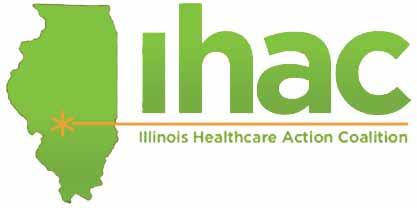
Shaping Nursing’s Future: Illinois Healthcare Action Coalition:
The Illinois Healthcare Action Coalition (IHAC) is working in partnership with the Center to Champion Nursing in America (CCNA) on the Future of Nursing: Leading Change, Advancing Health. Nurses have stepped forward to work in coalition to focus activities in support of nursing as an essential component of health care to maintain access to quality health care. http://www.anaillinois.org/Main-Menu-Categories/Partners/IllinoisHealthcare-Action-Coalition
Illinois has focused activities in four areas through the IHAC Workgroups. The four Workgroups are: Education, Collaboration, Leadership and Practice; involvement remains open and varies depending on the project: http:// www.facebook.com/IHAC2013. Workgroups leaders have provided a summary of projects and deliverables, a midyear report:
Work Group Activities through September 2013
IHAC Collaboration Workgroup
The purpose and charges of the Collaboration Workgroup were confirmed by the Committee:
Purpose: The Collaboration Workgroup will identify and foster modalities of interprofessional cooperation to forward the education, practice, and leadership components of preparation for a diverse healthcare workforce.
Membership: We recruited new members from outside of nursing – the Chicago Healthcare Executives Fellows Treasurer (Dina Pilipczuk) and a health care industry attorney and practicing paramedic (Frank Nagorka). We approached and are waiting for acceptance from the Illinois Chamber of Commerce (Healthcare Committee) and Blue Cross and Blue Shield of Illinois.
Carol Payson, RN, Director, Northwestern Memorial Hospital; M. Cecilia Wendler, RN, Director, Memorial Medical Center; Janet Krejci, RN, Dean, College of Nursing, Illinois State University; Linda Olson, RN, Director of the Institute of Regulatory Excellence at National Council of State Boards of Nursing; Melinda Noonan, RN, AVP, Hospital Operations, Rush University Medical Center, Director, Rush Children’s Hospital, Asst. Professor, College of Health Sciences and College of Nursing, Rush University; Susan Swart, RN, American Nurses Association – Illinois; Frances Vlasses, RN, Assoc. Professor, Marcella Niehoff College of Nursing, Loyola University; Frank Nagorka, JD, EMT-P, Private Practice; Dina Pilipczuk, MBA, AVP, Nursing Operations, Rush University Medical Center.
The purpose and charges were compared to the IOM/ RWJF Future of Nursing Report.
1. Received reports from Collaboration Work Group members on Interprofessional Collaboration Loyola
• 3rd year Med Students and Senior Accelerated BSN Nursing students (20-30 students) attend an one day workshop together
• Interdisciplinary team steps are done in the Simulation Lab.
• Grad students learn interdisciplinary clinical reasoning
• Interdisciplinary Leadership Communication is done with Associate Deans. NMH
• Completed research in area
• Nursing and Physician Simulations (Summer)
• Rapid Improvement Workshops MCMC
2. Developed regional collaborative with APNs. Identified professions to collaborate with and build new relationships. We will be recruiting members from medicine and pharmacy.
3. We are collecting Interprofessional continuing education resources from members and posting in a centralized repository (Dropbox).
4. The workgroup agreed to meet quarterly by telephone until our membership recruitment is complete. We will then have our first face-to-face meeting.
Co-Chairs: Sheri Banovic, MSN, RN, FNP-BC, Lewis and Clark Community College
Vicki Keough, PhD, APRN-BC, ACNP, FAAN, Loyola University Chicago
The Education Workgroup is comprised of members representing nursing education programs and education practice partnerships across the state including practical nursing schools, community colleges, universities, and practice settings. In early meetings, the workgroup discussed the charges for the group and areas of focus. A survey monkey was created to obtain feedback from group members regarding priorities. The group decided to focus on the following two priorities:
1. Seamless Educational Progression: Develop innovative models of education for nurses, nursing students and faculty to continue their education and engage in lifelong learning in order to gain competencies needed to provide care for diverse populations across the lifespan.
2. Collaborative Practice Partnerships: Develop collaborative partnership models with faculty and health care organizations to promote best practices for nursing education in order to ensure that graduates at all levels are prepared to meet current and future population healthcare needs.
The workgroup was divided into two task forces (Collaborative Partnership and Seamless Progression) to concentrate on these areas.
The Seamless Educational Progression Task Force is crafting a position statement to reflect the vision of seamless educational progression for nurses in Illinois. An educational consortium is being discussed as a way to share resources throughout the state and streamline the educational process. The committee is reviewing educational frameworks from other states that have instituted statewide nursing curriculums as a means to seamless educational progression for nurses. This may be statewide or regional in focus. The Collaborative Partnership Task Force is currently developing a survey for nursing schools and practice settings to determine issues and best practices. They will also focus on clinical placement concerns.
The IHAC Leadership Workgroup currently has five subcommittees. These subcommittees include: association involvement; board participation; certifications; competencies; and networking. The following lists the progress of each subcommittee.
• The networking subcommittee has met two times in last 4 months. They researched current literature and discussions on networking. The subcommittee then created a questionnaire that has been distributed to nurse leader groups. We are currently awaiting those results.
• The Board Participation and Policy Subcommittee is working on developing a Toolkit for Nurse Leaders with specific components in developing effective negotiating skills which empowers the nurse to advocate for the nursing profession and public’s safety at tables of decision making. Successful nurse leaders will need such skill sets in fulfilling the IOM recommendation #2: Expand opportunities for nurses to lead and diffuse collaborative improvement efforts. Once this is completed, the group will look at mechanisms to increase nurse involvement on boards.
• The accreditation committee approved an accreditation informational grid and recommended that IONL post it on the IONL web site. It is also posted the ANA-Illinois website. The subcommittee has agreed to create a survey about accreditation and publish it in the Voice along with a short article on the importance of accreditation for professional nurses.
• The association involvement subcommittee completed a summary of the benefits of joining a professional nursing association. In this way, professional nurses and other nursing organizations in Illinois have a 1-page summary to use in publications, presentations and during meetings.
• The competency subcommittee created lists of competencies for nurse leaders at every level, including the staff nurse.
The charge of the IHAC Practice Workgroup is to identify and recommend strategies for all nurses to practice to the full extent of their education and training, as noted in the IOM study on the Future of Nursing.
A priority goal of this workgroup is to survey advanced practice nurses in Illinois to examine the practice patterns, locations, and numbers of APNs working in Illinois. The survey, adapted from the HRSA APN survey, will begin in late 2013. This survey seeks to identify:
• practice setting and locations of practice;
• ethnic, racial, and cultural backgrounds of APNs;
• APNs working with written collaborative agreements (WCA), under credentialing and privileging, and those working under both systems; and
• APNs with admitting privileges and where they admit.
The survey will also:
• determine what conditions are included in Written Collaborative Agreements (WCAs); and
The Practice Workgroup will also use information obtained from the Metropolitan Chicago Healthcare Council (MCHC) on the processes for credentialing and privileging used in Illinois health care organizations.
The data from the survey, the information from MCHC, in collaboration with the Illinois Hospital Association, and data on underserved counties in Illinois will be used to create an asset map to identify penetration of APNs in underserved counties, practice settings, admitting privilege settings and location of practice. Once asset mapping is complete, this workgroup will develop an educational tool re: APNs as primary care providers. Representatives of communities served and minority nurses associations will participate in development of the tool.
In summary, nurses in Illinois continue to work in partnership with the Center to Champion Nursing in America to make a difference. Through the Illinois Healthcare Action Coalition projects are a coordinated effort to improve access to quality patient care. The need for nurses to care for patients continues to grow with the ACA implementation, with baby boomers retiring – including nursing faculty. The time to speak with one voice to make nursing and patient care the quality we want is now, become involved in the Illinois Healthcare Action Coalition. Visit http://www.facebook.com/IHAC2013
VA St Louis Health Care System

We are seeking qualified RNs for: Medical & Surgical Intensive Care Hemodialysis Spinal Cord Injury Operating Room
We offer an OUTSTANDING benefits package! Recruitment Incentives Competitive salary 26 vacation days per year

10 paid Federal holidays per year
Academic education programs
The Best Care The Best Careers
To Apply: Refer to our website www.usajobs.gov
Contact Gwendolyn Fay Holland Nurse Recruiter
gwendolyn.holland@va.gov
VA St Louis Health Care System (314) 289-6479
Harvey
V. Fineberg,
President, Institute of Medicine,
and
Risa Lavizzo-Mourey, President and CEO, Robert Wood Johnson Foundation
Three years ago, the Institute of Medicine (IOM) released its landmark report The Future of Nursing: Leading Change, Advancing Health, made possible by the support of the Robert Wood Johnson Foundation (RWJF). In light of the tremendous need for nurses in health care today and in the future – due to the growing numbers of people with chronic diseases, an aging population, and the need for care coordination – the report provided a blueprint for how to transform the nursing profession. Recommendations put forth by the report committee included removing barriers to practice and care, expanding opportunities for nurses to serve as leaders, and increasing the proportion of nurses with a baccalaureate degree to 80 percent by 2020.1
Spurred by the 2010 IOM report, RWJF and AARP partnered to establish the Campaign for Action, an initiative to mobilize action coalitions in all 50 states and the District of Columbia to utilize nurses more effectively in confronting the nation’s most pressing health challenges. Although we have made measurable progress in the past 3 years, we have more work to do to fully realize the potential of qualified nurses to improve health and provide care to people who need it.
Nurses account for the largest segment of the health care workforce – totaling more than 3 million nationwide.1 However, many advanced-practice registered nurses (APRNs) currently are not able to practice to the full extent of their education and training, due to scopeof-practice barriers. This means that the same nurse practitioner would be required to have more physician oversight in Kansas City, Missouri, than across the state line in Kansas City, Kansas. As such, the IOM report made recommendations to Congress, state legislatures, the Centers for Medicare & Medicaid Services, and others to remove barriers that prevent nurses from fully utilizing their skills to meet health care needs in their communities. But this must be more than simply a recommendation – it needs to become a reality. As one of the priorities of the Campaign for Action, 43 state action coalitions have prioritized initiatives to remove scope-of-practice laws that prohibit APRNs from delivering care to the full extent of their education and training. In the past 3 years, seven states – Iowa, Kentucky, Maryland, Nevada, North Dakota, Oregon, and Rhode Island – have removed major barriers to APRN practice and care.2 In 2013, 15 states introduced bills to ensure that APRNs can practice to the full extent of their education and capabilities without the constraint of unnecessary physician supervision.2
Another theme underscored in the IOM report is that nurses should achieve higher levels of education and training, and this depends on an improved nursing education system. Because individual and population health needs are changing, and our health care system is ever-evolving, we need nurses to know more and be better trained to provide care in a transformed system. The IOM report recommended increasing the proportion of nurses with a Bachelor of Science degree in Nursing (BSN) to 80 percent by 2020. In 2010, the percentage of employed nurses with a BSN or higher degree was 49 percent, and as of 2011 that percentage had risen to 50 percent.3
The views expressed in this commentary are those of the authors and not necessarily of the authors’ organizations. The commentary is intended to help inform and stimulate discussion. It has not been subjected to the review procedures of the Institute of Medicine and is not a report of the Institute of Medicine or of the National Research Council.
Progress is likely to accelerate in the years to come, because between 2011 and 2012 alone there was a 22.2 percent increase in enrollment in RN to BSN programs and a 3.5 percent increase in enrollment in entry-level BSN programs.4 We can attribute some of this success to the Campaign for Action, as 48 of the 51 action coalitions are working to enable seamless academic progression in nursing. There also has been a recent upsurge in the number of students enrolled in nursing doctorate programs.
Perhaps one of the biggest achievements of the campaign and our colleagues across the nursing community is that, through a $200 million demonstration project in five hospital systems, Medicare will pay to support the training of nurses. The hospital systems are located in Arizona, Illinois, North Carolina, Pennsylvania, and Texas.
Finally, there is an essential need for more nurses to provide leadership. From the bedside to the boardroom, nurse leaders bring critical skills and capacities for coordinating care and managing the disparate services involved in serving individual patients and advancing community health. The Campaign for Action has tapped established and emerging nurse leaders across the nation and is working to provide them with opportunities for networking, skills development, and mentoring. A key strategy is to advocate for more nurses to serve on hospital boards.
At every level – federal, state, and community – we must continue to advance the recommendations of The Future of Nursing IOM report and the burgeoning success of the Campaign for Action to improve patient care, with nurses leading the charge.
References
1. IOM (Institute of Medicine). 2011. The future of nursing: Leading change, advancing health Washington, DC: The National Academies Press.
2. Center to Champion Nursing in America. Current activity on removing barriers to practice and care http:// campaignforaction.org/sites/default/files/APRN%20 Practice%20%20Care%20two-pager_0.pdf (accessed October 2, 2013).
3. American Community Survey, Public Use Microdata Sample.
4. American Association of Colleges of Nursing. 2012. Survey, 2011-2012 Enrollment and Graduations in Baccalaureate and Graduate Programs in Nursing.
5. CMS (Center for Medicare & Medicaid Services). 2013. Graduate nurse education demonstration. http://innovation. cms.gov/initiatives/gne (accessed October 2, 2012).
Suggested citation: Fineberg, H.V., and R. LavizzoMourey. 2013. The future of nursing: A look back at the landmark IOM report. Commentary, Institute of Medicine, Washington, DC. http://www.iom.edu/ nursingcommentary

Each year during Nurses’ Week at OSF Saint Francis Medical Center we celebrate the gift of nursing and recognize them for their commitment to those we serve. These nominees are the most outstanding nurses that go above and beyond to exemplify the Sisters’ mission. OSF Saint Francis Medical Center is blessed to have nurses that continually strive for excellence to produce positive outcomes for our patients and organization.
There were 83 nurses nominated out of over 2500 nurses which include over 200 APNs at OSF St. Francis. Three APNs who are part of the Illinois Neurological Institute at OSF St. Francis were nominated for the Nursing Excellence Award this spring. They are Cristin Rassi, APN, CNS, Connie Haase, APN, FNP, and Jana Reed, APN, ACNP.
Connie is a Physiatry Rehabilitation APN. Cristin and Jana are Neurosurgery APN’s. Cristin and Connie were nominated in the Empowerment Category. Jana was nominated in the Exemplary Professional Practice Category. Cristin and Jana were chosen for their categories. The ceremony was May 8, 2013 where over 300 colleagues and families attended.
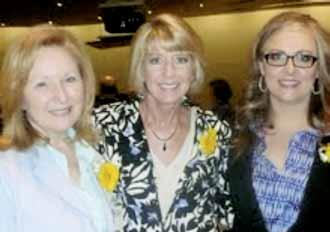
The Old Irving Park Community Clinic (OIPCC) is a free clinic on the northwest side of Chicago which opened in November 2007. The free clinic was started by Dr. Charles Martinez and George Maltezos L.C.P.C., two pioneers of social justice. They felt that it was just not acceptable for people to have to choose between medical care and food or housing, etc. Opening our free clinic has opened the door to empowering people to have the opportunity to receive medical care and enhance their health. They are free to feel worthy of care.
We provide comprehensive quality healthcare to the uninsured and underserved at no cost to the patients. We offer adult primary care medicine, behavioral health, and several specialties such as cardiology, pulmonary, GI, orthopedic, gynecology, dermatology, endocrinology, nephrology, and podiatry care, with a heart and a smile!
The clinic has six employed staff and a 97% volunteer staff. There is a loyal and dedicated group of people at OIPCC including a team of doctors, nurse practitioners, physician assistants, nurses, medical assistants, nursing students, and clerical assistants.
The “Medical Home” model exists here and we are always looking for compassioned volunteers with a true heart of service to add to our medical family and to help us sustain our mission.
The clinic has no government funding, but remains open by the kindness of private donors, corporate sponsors, and foundations.
Nurses, if this article has peaked your interest and you would like to consider donating your time and talents to our clinic, please call Terri L. Santiago, Nurse Manager of Old Irving Park Community Clinic, at 773-427-0298 or email tsantiago@oipcc.org. We welcome nurses from all clinical backgrounds and we look forward to hearing from you.
by Susan Trossman, RN
Reprinted with permission of The American Nurse.
Despite political wrangling over the Affordable Care Act (ACA) and a federal government shutdown, nurses around the nation have been promoting and preparing for the enrollment of millions of uninsured Americans through health insurance exchanges, also called marketplaces. Initial open enrollment in these exchanges began Oct. 1.
Eligible persons who cannot afford insurance or who have been denied coverage can compare and select from insurance options at these exchanges. Some are state run, others, federally run, and still others, a combination.
The Wisconsin Nurses Association (WNA) Board of Directors created a task force to help determine the most effective ways nurses can help Wisconsin’s 500,000 residents gain access to coverage via the federal Health Insurance Marketplace. (Wisconsin policymakers rejected developing its own state exchange.)
The WNA 45-member task force is comprised of nurses from many roles, including staff nurses, administrators and educators, and from the designated 11 Regional Enrollment Networks (RENs) located throughout the state, according to task force chair Lea Acord, PhD, RN. Task force members also divided into working groups that currently are gathering comprehensive information and developing strategies around enrollment in four key areas. For example, one subgroup is looking at how each REN is operating and how to get more nurses involved in those regional enrollment efforts. Another
group is compiling a “frequently asked questions” resource for nurses so they can provide patients with accurate information, as well as combat “purposeful misinformation,” Acord noted. WNA will be cementing its strategies following an Oct. 18 gathering held during the association’s annual meeting and convention.
“In Wisconsin and across the United States, we can really make a difference in whether the exchanges are implemented well or not,” Acord said. “People trust nurses, and at WNA we feel a strong responsibility to provide accurate information to help people understand their options.”
Meanwhile, as a member of the Advisory Committee to the state-based Washington Health Benefit Exchange and a nurse administrator with Public Health Seattle and King County, WA, Patty Hayes, MN, RN, has been closely involved in developing the exchange. She also has helped design an outreach network and programs to support enrollment in her county.
“In Seattle King County, we took a community-based approach by building a network of organizations and providers who are trusted resources in the community to help enroll uninsured residents,” said Hayes, who also serves on the Washington State Nurses Association’s Legislative and Health Policy Council and brings her expertise on public health and low income populations to the exchange’s Advisory Committee. “Enrollment assistance will be available in 34 different languages. And so far we are getting incredible interest from the community.”
Currently there are an estimated 180,000 uninsured King County residents who are eligible for affordable
coverage through the expansion of Medicaid and through the Washington Healthplanfinder.
Hayes said because of nurses’ set of skills, they are ideal to step into roles where they can help build the systems to effectively reach those who are in need of affordable coverage.
South Dakota Nurses Association (SDNA) Treasurer Deb Fischer-Clemens, MHA, BSN, RN, has been spreading the word about how South Dakotans can enroll in the federally run exchange through her role as senior vice president for policy for a large health system and as a member of the SDNA Government Relations Committee.
“I’ve been doing a lot of presentations to nurses and other staff [who are part of our health care system] and out in the community,” Fischer-Clemens said. “Nurses want to know how to respond to their patients’ questions about the exchange and enrollment, and they should be raising the issue with patients.”
Fischer-Clemens also has helped develop and disseminate materials on the exchange to health care staff and other stakeholders. She noted that large contingents of volunteers won’t be coming to South Dakota to help enroll residents. So beyond the trained navigators and certified application counselors who can talk about the specifics of insurance products, it’s critical that nurses get educated on and involved in enrollment efforts.
“It’s about social justice,” Fischer-Clemens said. “Health care is a basic human right. And who should be helping people gain this right but nurses?”
Watch for ongoing coverage in the upcoming issue of
The American Nurse
by Julia Havey
Animal-Assisted Activities and Animal-Assisted Therapy (AAT) are the preferred terms used by Pet Partners as an activity that involves pets visiting people, providing opportunities to promote improvement in human physical, social, emotional, and/or cognitive functioning to enhance quality of life ( http://www.deltasociety.org, 2011). AAT is delivered in a variety of environments by specially trained handlers, usually volunteers, with animals that meet specific criteria ( http://www.deltasociety.org, 2011).
Animals as a deliberate therapeutic tool have actually pre-dated the most recent surge of the past 50 years. Nightingale in her Notes on Nursing discussed the pleasure a pet can give a confined chronic invalid (Stanley-Hermanns and Miller, 2002). AAT can arguably date from the time humans have ‘lived’ with animals as demonstrated by the studies looking at farm livestock and mental health patients (Berget, Ekeberg and Braastad, 2007).
A young woman recovering from brain surgery had a smile on her face as she greeted the AAT team entering her room. The woman requested that the dog be on the bed with her. As Linus, a golden retriever, lay alongside her, her fingers continually stroked his fur over the next 20 minutes. The woman’s mother took a picture of Linus and her daughter at the daughter’s request. The woman said a drowsy good-bye as Linus left her room. Her mother related the family’s 13 year old golden retriever died 8 months previously and said a tearful good-bye of her own to the ATT team. A year later, Linus visited a geriatric patient. The patient’s daughter smiled as she related it was her daughter Linus visited last year. She stated that her daughter keeps the picture of herself and Linus in her Day Timer. The daughter has frequently spoken of her time at the hospital and the visit Linus made with her as a high point. The daughter related to her family that thinking of the visit and looking at the picture made her feel good and helped her get through the hospitalization as well as the subsequent semester at college. Another year later, Linus visited a middle-aged man who has just experienced his first cardiac event. His wife greeted Linus with tears and non-stop hugging. Yes, it was the same woman and now her husband needed the special attention she came to ‘expect’ from the hospital and her need for comfort from an AAT team.
Animal-assisted therapy is a modality that healthcare clinicians today can incorporate into their practice even if they are not the personal handler of the animal team. Nursing today faces challenges to provide compassionate
care offset by cost cutting initiatives, dehumanizing technology and less face time with sicker clients/patients. Howell-Newman & Goldman’s Animal-Facilitated Therapy theory (1993) supports the effect of the humananimal bond on the health of the individual. The presence of animals at the point of care can provide comfort and a sense of normalcy with pleasant distraction. Incorporation of AAT into the nursing or physical therapy plan of care can benefit a broad patient population on many levels. AAT is an opportunity for the nurse to participate in an interaction with her patient that can result in benefits for both. AAT is almost always volunteer based and can afford a moment of mutual connection with no agenda on either side. It is an opportunity to observe the client/patient in unguarded activities. A conversation can take place that focuses on other aspects of the patient as a person –reminiscences of past pets, the home environment with current pets, etc. A nurse can identify patients that may benefit from AAT when other more traditional methods to connect with the patient have been less than successful. Many AAT programs across the U.S. have been initiated thru nursing efforts. A nurse may consider becoming an AAT handler, an excellent choice in adjunctive care of a patient with a team that can work on and report specific observations because of the handler’s knowledge. AAT in a nurse’s toolbox of therapeutic interventions is limited only by her imagination.
References AAT at a Glance. Retrieved December 30, 2011 from http:// www.deltasociety.org
Berget, B., Ekeberg, O., Braastad, B., (2007). Animal-assisted therapy: effects on persons with psychiatric disorders working with farm animals, Green Care in Agriculture: Health Effects, Economics, and Policies Symposium , June 20-22, 2007 Abstract presentations Howell-Newman, K., Goldman, P.L., (1993) Marketing animal facilitated therapy. Health Mark Q.,11, 77–98 Stanley-Hermanns, M., Miller, J., (2002). Animal-assisted therapy, American Journal of Nursing, 102(10), 69-76
Note: The Author’s: research study ‘Animal-Assisted Therapy Decreases Pain Medication Use After Joint Replacement’ has been accepted for publication by Anthrozoos, June, 2014


Too often, insurance carriers and pharmacy benefits managers impose all kinds of requirements before a doctor is able to obtain needed medications or medical services for a patient. Nurses know as well as anyone that these can result in countless hours of administrative work for staff and often significant delays for patients. An American Medical Association study shows that a typical physician’s office spends 20 hours per week on this process, and in Illinois alone more than 300 forms currently exist!
In the upcoming legislative session, the Illinois Society for Advanced Practice Nursing will engage in the prior authorization issue as advocates for our patients. There is a movement afoot in the Illinois General Assembly, which will resurface in January, to improve state rules and laws to better standardize and streamline this prior authorization process and improve patient access to important medicines.
To do this, we need your help! In order to demonstrate the impact that this issue has on nurses and patients alike, we would like to collect information and stories that we can share to tell this story. As such, ISAPN asks:
• Do you have examples of patients whom you know have waited too long for approval, missing days or even weeks of meds?
• Would any of those patients be willing to share their stories – really demonstrating in a powerful way the damage from the lack of a standardized, streamlined process? (If not, we would still like the examples to share – i.e., a woman in her sixties waited more than a week to get her blood thinning medicine approved, putting her at increased risk of stroke every day…)
• Do you have examples of giant amounts of paperwork or confusion because of this issue that you can share?
• Are you willing to speak about this issue – perhaps with your local media? (We will provide messaging and support)
These stories will help us demonstrate to policymakers that change is needed in Illinois. Please share your stories with Susan Swart at syswart@isapn.com
Alma J. Labunski, PhD., MS, RN, Vice-President, IL Nurses Foundation, Editor Emeritus, Editorial Committee.
Initiated in 2004, the Gift of Hope Legacy Program was created so that an individual can provide financial support to the INF through sound financial estate planning. It demonstrates support and concern for the profession by allowing allocation contributions to the nursing profession. As an outstanding program, the legacy’s plan involves wills, trusts, legacy donations, bequests and gift annuities as delineated below. The Illinois Nurses Foundation recommends that all donors seek the review and assistance of a financial advisor and/or attorney prior to contributing to the Gift of Hope Legacy Program.
The Legacy Program offers several options for professional colleagues. They are as follows:
A WILL is a document which provides the manner in which a person’s property will be distributed when the individual expires. If one dies without a will, the State will determine his/her property. Hence, each individual is encouraged to seek an attorney for guidance and assistance. (The LEGACY describes a gift of money via the Will. It may be recognized at a bronze, silver or gold level. If one issues a life insurance policy and names the Foundation as beneficiary, the donor is completing a LIVING WILL.
A BEQUEST denotes providing a gift of personal property, a portion of one’s estate, the residual of one’s estate or a specific dollar amount. Commonly used, Bequests should be conveyed through the individual’s Will.
An ESTATE specifies property donated in part or in full to the Foundation after death. Again, it is designated by the individual’s Will.
A TRUST is another “popular” planning vehicle. It is a property interest held by one person for the benefit of a recipient such as the Foundation. It is a flexible planning tool which may be designated through the individual’s Will. A LIVING TRUST is one that is established by a creator during his/her lifetime. It is designed to transfer one’s property to a Trustee to manage the property. The generator, however, maintains complete control over the assets.
MakerNurse honors the inventive spirit of nurses across America and seeks to bring nurse making to the forefront of health care.
Over the next six months, MakerNurse will be collecting stories from inventive nurses across the nation to better understand what drives them to innovate and how best to nurture the creative potential of the American nurse. Sign up for updates and stay tuned for information on how you can get involved and share your story.
How MakerNurse Began
MakerNurse began in 2013 through a collaboration between Jose Gomez-Marquez and Anna Young of The Little Devices Lab and Lori Melichar and Jody Struve of the Robert Wood Johnson Foundation (RWJF). The team from The Little Devices Lab brought years of experience with the Maker Movement and nursing innovation in developing countries. The RWJF team, inspired by over 10 years of working to prepare and empower nurses to lead efforts to improve care, proposed the idea of exploring applications for these findings in America. The tremendous opportunity to explore nursing innovation in America began a whirlwind of conversations between The Little Devices Lab and RWJF which led to MakerNurse: a project which honors the inventive spirit of nurses across America and seeks to bring nurse making to the forefront of health care.
Our Team
Jose Gomez-Marquez, Medical Device Designer, The Little Devices Lab @ MIT
Anna Young, Research Scientist, The Little Devices Lab @ MIT
Lori Melichar, Senior Program Officer, Robert Wood Johnson Foundation
Jody Struve, Communications Associate, Robert Wood Johnson Foundation
How do you spot a MakerNurse?
MakerNurses are the problem solvers and patient advocates who live and work in the heart of our healthcare system. MakerNurses recognize the opportunity for better patient care through improved technology or new design. Sometimes these improvements are within their reach to create. Other times, these innovative ideas remain a sketch on the back of a napkin, waiting for the right support to bring them into realization.
Chicago State University Doctoral Faculty Opportunities
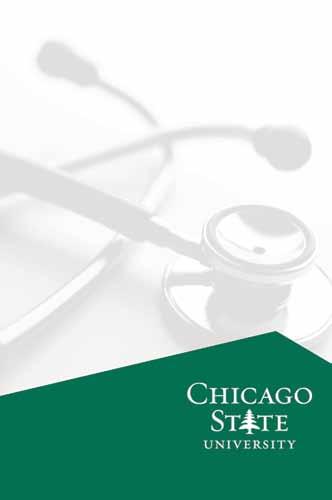
Chicago State University is Chicago’s oldest, fully accredited public university
Teach in a Bachelor of Science in Nursing (BSN) and Master of Science in Nursing (MSN) program.
Faculty teaching in the BSN program should have expertise in one of the following areas:
– Med-Surgical – Pediatrics
– Maternal-Child – Mental Health
– Community Health Nursing
Faculty teaching in the MSN program should have expertise in one of the following areas:
– Nursing Education – Nursing Administration
– Community Health Nursing
The Department of Nursing is designed to help nurses plan for a challenging, exciting & rewarding career in nursing.
A GIFT ANNUITY AGREEMENT is one in which the donor transfers money or property to a charitable organization as the foundation, and receives a contract that states the donor will receive a predetermined amount from the annuity, annually for life.
In summary, plans for allocating one’s property’s designation includes sound financial preparation for one’s life in order to make the most of his/her resources. By allocating the contributions to advance the nursing profession, the professional demonstrates concern and support for the profession. One’s Estate planning tools will offer the opportunity to maintain that support and promote a long lasting donation to the nursing profession. First, however, the individual is urged to determine one’s own assets and values. Thereafter, the Foundation reminds donors to seek legal counsel and/or a financial advisor prior to all contributions to the Gift of Hope Legacy Program.
Additional information is provided in the INF brochure, which is available at www.ana-illinois.org

“In the last few years, our academic research at MIT and LDTC+Labs, led us thousands of miles away to find examples of DIY medical technologies being used in hospitals and clinics around the world. There was overwhelming evidence that many of the best medical makers were nurses. They are fearless. They are creative. However, they are also very quiet about it.”

–Jose Gomez-Marquez, Director, The Little Devices Lab @ MIT
“We know nurse innovators are out there, making things and using their imagination to solve problems, improve care and enhance the patient experience–whether it’s a paper clip model, an improved catheter, or a new surgical device in the works. We want to shine a light on those innovations and create a culture where nurse making is celebrated and encouraged.”
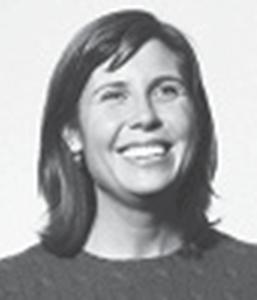
–Lori Melichar, Senior Program Officer, Robert Wood Johnson Foundation
by Paul O’Toole and Joseph Lauer of The Law Office of Salvato & O’Toole
Injuries to nurses are on the rise while their rights under the Illinois Workers’ Compensation Act are being eroded. The constellation of these two events has lead to catastrophic results for nurses. In the course of our practice, we have seen an increase in the number of nurses suffering work-related injuries and being denied benefits because of their failure to follow the protocol set forth in the Illinois Workers’ Compensation Act.
Under the Illinois Workers’ Compensation Act, an injured nurse is required to do the following:
1. File an application with the Illinois Workers’ Compensation Commission within three (3) years of the accident or two (2) years of the last payment of compensation benefits, whichever is longer and;
2. Give notice to a person in authority within fortyfive (45) days. The notice can be oral or written. Although oral notice is an acceptable form of notice, the best way to ensure proper notice is to request and complete a written report of accident.1
In our representation of injured nurses we have seen an increase in the denial of benefits. Insurance companies/ employers are using the forty-five (45) day notice requirement as a trap, consistently alleging that the nurse failed to timely report his or her accident. As a result, once the case is filed at the Illinois Workers’ Compensation Commission, the cases are intensely litigated and take years to navigate throughout the system.
We are actively litigating many cases involving nurses where the central dispute is notice to the employer. One of the most consistent fact patterns involves back injuries and shoulder injuries. The fact patterns are more or less as follows:
A nurse while moving a patient feels a tweak in his or her lower back or shoulder. He or she mentions the tweak in passing to his or her supervisor who fails to complete an incident report. The nurse continues to work. Sometime later, he or she experiences the same tweak while moving a patient. Instead of properly reporting the incident to his or her supervisor, he or she decides to self-treat the injury. Months pass and the condition only worsens. By the time the nurse finally seeks out medical treatment the condition has reached catastrophic levels that affect the nurse’s ability to work.
There is no question that such injuries occur due to work-related activities. However, because the injury is not properly reported, the employer/insurance company has a basis to deny the nurse his or her benefits. It refuses to pay his or her medical bills and disability check and alas, the nurse is entangled in hotly contested and protracted litigation.
Nurses in general tend to self-treat, self-medicate and fail to report work-related accidents. It is not only the lawyers in our firm who recognize this but also researchers who have documented their findings throughout medical and psychological text.2
Nurses’ failure to report becomes a recipe for disaster when mixed with the fact that nursing injuries will more than likely escalate in the near future due to the prevalence of heavier patients. In a recent article by Sydney Lupkin via Good Morning America, Ms. Lupkin wrote that “[r] egistered nurses ...endure more [musculoskeletal] injuries than the average worker.”3
According to the United States Department of Labor: In 2011, there were 34,150 occupational musculoskeletal disorder (MSD) cases in private industry where the source of injury or illness was a health care patient. This accounted for 11 percent of the 309,940 total cases of MSDs that resulted in at least one lost day from work in 2011. Almost all (98 percent) of the cases involving patient handling occurred within the health care and social assistance industry, composing 47 percent of the 70,890 total MSD cases in that industry.4
In an article in The New York Times, Dr. Pauline Chen wrote of nurses:
...nurses’ work is not easy, particularly in the hospital setting, where they must deal with intense intellectual and significant physical demands over three or more grueling 12-hour shifts each week. Not surprisingly, nursing ranks among the worst occupations in terms of work-related injuries, and studies have shown that in a given year, nearly half of all nurses will have struggled with lower back pain.5
Why do Nurses still fail to report their injuries in light of these staggering statistics? According to a quote from Dr. Susan Letvak, an associate professor of nursing at the University of North Carolina, Greensboro, in the New York Times article “[n]othing is supposed to stop a nurse.” “We are supposed to care for everyone else and soldier on.”
In September of 2011, the pro-business, anti-employee changes to the Illinois Workers’ Compensation Act went into effect. Now, even if an injured nurse reports his or her work-related accident and the employer/insurance company agrees to pay benefits, the nurse will still have to face the new restrictions set forth in the Act.
With respect to receiving medical treatment, prior to September 1, 2011 (the effective date of the new Act), if a nurse was injured on the job, he or she could chose up to two doctors for treatment and his or her employer would be responsible for paying the medical bills of both doctors.
After September 1, 2011, employers have the right to establish preferred provider programs (PPPs). Nurses have the right to chose two doctors in the employer’s network or opt out of the PPP in writing at anytime and chose one doctor outside of the network.
The employer now has the first choice in medical care for an injured nurse through its PPP program. If the injured nurse opts out in writing he or she is only entitled to chose one doctor. The new law on medical treatment restricts the right of injured nurses to select a doctor and could result in delayed care and prolonged treatment.
With respect to compensation, injured nurses are entitled to recover a lump sum for the permanent injuries they suffer in a work-related incident. This sum is known as permanent partial disability or “PPD.” If one’s case did not settle a hearing would be held and an Arbitrator would determine what PPD, if any, an injured nurse was entitled to recover.
Before September 1, 2011, Arbitrators would consider the subjective testimony of the injured nurse when evaluating PPD. Now, there are certain objective measures that the Arbitrator weighs when determining what, if any, permanent partial disability should be awarded to an injured nurse. The new law weakens the argument of the injured nurse by diminishing the strength of his or her subjective complaints during an arbitration hearing.
In terms of carpal tunnel syndrome injuries, prior to September 1, 2011, there was no cap on how much an injured nurse could recover for such an injury. Now, all carpal tunnel syndrome cases are worth a specific amount regardless of the severity of the case and are some of the most disputed of workers’ compensation cases.
The “soldier on” mentality of the nurse often results in a failure to report work-related injuries. Employers and insurance companies use that failure to provide notice as a means to deny the nurse his or her benefits. In those instances where the nurse properly reports his or her accident and the claim is accepted, he or she must still face adversity in the form of the Workers’ Compensation Act. This article is written in the hopes that nurses will report their injuries and seek the proper medical care so that they can avoid catastrophic results.
1. See Generally 820 ILCS 305/1 (2013)
2. See Brown JG, Trinkoff A, Rempher K, McPhaul K, Brady B, Lipscomb J, Munatner C, AAOHN J. 2005 May; 53(5):213-7, Nurses’ Inclination To Report Work-Relatd Injuries: Orginazational, Work-Group, And Individual Factors Associated With Reporting.
3. Lupkin Sydney, Good Moring America, September 26, 2013, Nurses Prone To Injuries With Heavier Patients, http://abcnews.go.com/Health/nurses-prone-injury-heavierpatients/story?id=20373428
4. United States Department of Labor, Bureau of Labor Statistics, Last updated August 22, 2013, Frequently Asked Questions, www.bls.gov/IIF/
5. Chen Pauline, M.D., The New York Times, July 5, 2012, When It’s The Nurse Who Needs Looking After, well. blogs.nytimes.com
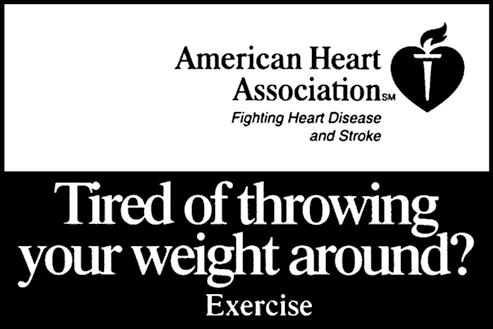
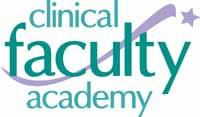
Another opportunity to participate in skill building for new clinical educators – January 2014 in Palatine, Illinois! The Clinical Faculty Academy (CFA) is a two-day skill building program that teaches MSN prepared nurses the necessary skills to become clinical educators. The Academy prepares nurses for the challenges of serving as a clinical nurse educator. Illinois Center for Nursing (ICN) has contracted with the Health Alliance of MidAmerica for the opportunity to offer this copyrighted material to Illinois nurses.
On Friday and Saturday, January 10 and 11, 2014 from 7 am-5pm, the CFA will be held at William Rainey Harper College, Palatine, IL. The address of Harper College: 1200 W. Algonquin Road, Rm Z119, Palatine, IL 60067; questions call 847-925-6523 http://goforward. harpercollege.edu/academics/areas/health/nursing/
The two day intensive Clinical Faculty Academy offers nine education modules that range from pre and post-conference planning to student evaluations. The training materials, based on adult learning theories, have been piloted, critically reviewed and refined. At least 450 Illinois nurse educators have completed the program since it was initially offered in 2008. The next planned CFA will be on August 6 & 7, 2014, both at Illinois Central College, Peoria, IL and through the South Metropolitan Higher Education Consortium (SMHEC).
The ICN was established in 2006, and is part of an overall strategy to produce more highly skilled nursing professionals, an ongoing effort to ease the nursing shortage and to improve access to quality health care for Illinois families. www.nursing.illinois.gov The Illinois Center for Nursing has supported this program since 2012.
Goldberg Law Group L.L.C.–
40 Years of Healthcare Experience
Areas: Licensing, Disciplinary Proceedings, Hospital Termination, Nursing Home Proceedings and All Nursing Rights Issues W E CARE A bO ut nu RSES and travel throughout Illinois

• Free Consultation
• All Communications Privileged
• All Calls or Emails returned immediately
Contact James b. Goldberg 312-930-5600 Ext 17
120 S. Riverside Plaza Suite 1675 Chicago, Illinois 60606
Email: jgoldberg@goldberglawoffice.com





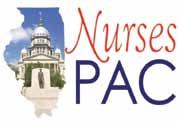
Nurses want to provide quality care for their patients.
The Nurses Political Action Committee (Nurses- PAC) makes sure Springfield gives them the resources to do that.
Help the Nurses-PAC, help YOU!
So. . . . . . . if you think nurses need more visibility if you think nurses united can speak more effectively in the political arena if you think involvement in the political process is every citizen’s responsibility.
Become a Nurses-PAC contributor TODAY!
❑ I wish to make my contribution via personal check (Make check payable to Nurses-PAC).
❑ I wish to make a monthly contribution to NursesPAC via my checking account. By signing this form, I authorize the charge of the specified amount payable to Nurses-PAC be withdrawn from my account on or after the 15th of each month. (PLEASE INCLUDE A VOIDED CHECK WITH FORM)
❑ I wish to make my monthly Nurses-PAC contribution via credit card. By signing this form, I authorize the charge of the specified contribution to Nurses-PAC on or after the 15th of each month.
❑ I wish to make my annual lump sum Nurses-PAC contribution via a credit or debit card. By signing this form, I authorize ANA-Illinois to charge the specified contribution to Nurses-PAC via a ONE TIME credit/debit card charge.
❑ Mastercard ❑ VISA
Credit card number Expires CVV
Signature:
Date:
Printed Name:
E-Mail:
Address:
City, State, Zip Code:
Preferred Phone Number:
Please mail completed form & check to:
ANA-Illinois
Atten: Nurses-PAC PO Box 636 Manteno, Illinois 60950
North Park University is a private Christian liberal arts school committed to developing students to lead lives of significance and service.
The School of Nursing invites applicants for a tenure-track position in graduate nursing program starting August 2014 . The qualified candidate must be a certified Adult Nurse Practitioner or a Gero/Adult Nurse Practitioner and hold an earned doctorate This individual must have a current APN license in the State of Illinois The primary teaching responsibilities for the position will be courses within the nurse practitioner program
Interested candidates should prepare a letter of intent, a curriculum vitae, the required essays, and should arrange for three letters of reference to be sent independently All materials should be submitted electronically to:
Dr. Janice Zeller, Professor and Director of the Graduate Program, School of nursing n orth Park u niversity
3225 W Foster Avenue box 22 Chicago, IL 60625
jzeller@northpark.edu
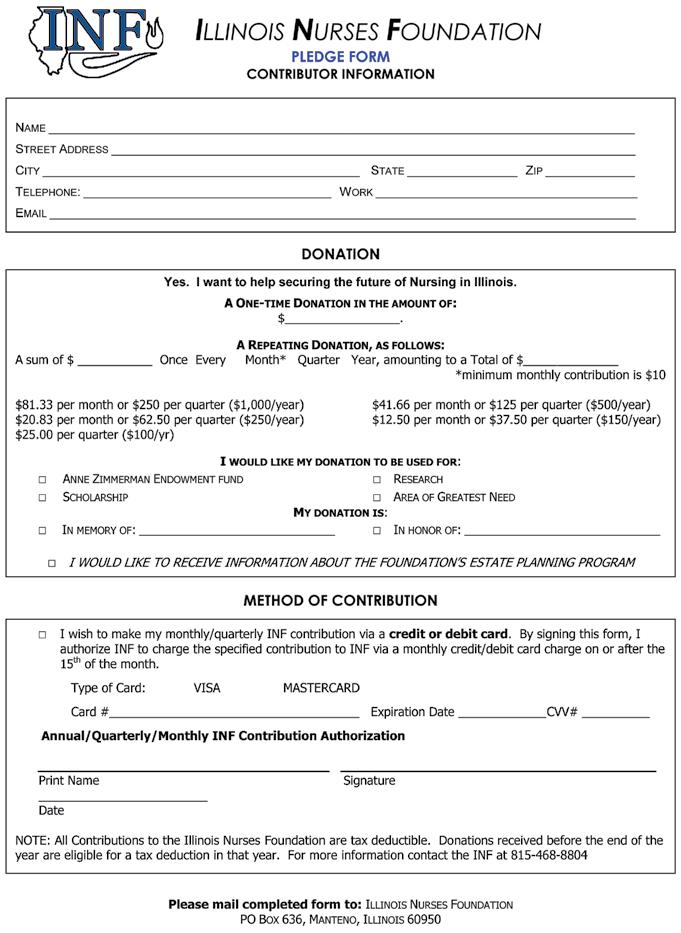
Congratulations to Chairperson Donna Hartweg, PhD, RN and Maureen Shekleton, PhD, RN, FAAN, ViceChairperson. The Nurse Practice Act was changed in 2013 by the Illinois legislators to make the Illinois Center for Nursing (ICN) Advisory Board operations consistent with those of other state boards (Public Act 098-0247). With that action, the ICN Chair is now chosen from within the volunteer board members who have been appointed by the Governor, rather than having the IDFPR Nursing Coordinator as a member and chair.
ICN was established by legislation in 2006, Section 75-10, the Nurse Practice Act. The Mission of the Illinois Center for Nursing (ICN) is to advocate and ensure appropriate nursing resources necessary to meet the healthcare needs of the citizens of Illinois. The ICN Chair from 2006-2013, Michele Bromberg, MSN, APN continues involvement in ICN activities which are in addition to Nursing Coordinator responsibilities to the approximately 200,000 licensed Illinois nurses.

Review of applications will begin immediately and continue until the position is filled
Both Chairperson Hartweg and Vice Chairperson Shekleton have been members of the Illinois Center for Nursing Advisory Board since 2006. During this time the 2007 Illinois Nursing Workforce Survey was completed; the Team Illinois partnered with state regional partners to expand nursing education capacity; the nursing workforce supply-demand data analysis was completed for both

LPNs and RNs; Illinois was selected, along with Ohio and North Carolina, to be one of three states participating in the National Council of State Boards of Nursing (NCSBN) Transition to Practice Research study, a randomized study to investigate the effect of the TTP model on patient safety and quality outcomes; and ICN along with ANAIllinois and the Illinois Organization Nurse Leaders are the Nursing Leadership of the Illinois Healthcare Action Coalition, which is working in partnership with the Center to Champion Nursing in America, on implementation of the IOM Recommendations from the report: Future of Nursing: Leading Change, Advancing Health.
The ICN is working with industry professionals and educational institutions to ensure that Illinois has a nursing workforce necessary to meet the demands of a growing and aging population. Visit the ICN website, www.nursing. illinois.gov
The teen birth rate for all age groups and all racial/ ethnic groups are at historic lows. According to The National Campaign to Prevent Teen and Unplanned Pregnancy (NCPTUP, 2013), in the US “the teen birth rate of girls age 15-19 declined 52% between 1991 and 2012. Between 2007 and 2012 alone, the teen birth rate dropped by 29%” (p. 1).
Even so, the teen birth rate in America is still three times higher than every other developed country (NPR Staff, 2012). Babies born in the U.S. to teenage mothers are at risk for long-term problems in many major areas of life, including school failure, poverty, and physical or mental illness. The teenage mothers themselves are also at risk for these problems. Adolescents who become pregnant may not seek proper medical care during their pregnancy, leading to an increased risk for medical complications. Pregnant teenagers require special understanding, medical care, and education – particularly about relationships, nutrition, sexually transmitted infections, substance abuse, and complications of pregnancy.
The PHD, in partnership with Township High School District 214 in Illinois, created a new teen parenting program. As of September 30, pregnant and parenting teens have been coming to the PHD for prenatal and parenting classes. The classes last six weeks and are held on Mondays from 4:30 to 7:00 p.m. The girls learn about Sudden Infant Death Syndrome (SIDS), Shaken Baby Syndrome, self-care, postpartum depression, breastfeeding, and positive discipline.
“We are very excited about this partnership,” said Catherine E. Vincus, Executive Director at PHD. “Pregnant teens are such a fragile group and at risk population. It’s very important to reach out to them early in their pregnancy. The program covers a different topic each week. The nurse teaches the girls about labor and delivery. She also does weigh in and checks the fetal heartbeat. PHD counseling staff provides professional counseling to help the girls overcome some of the obstacles they may face during their pregnancy,” added Vincus. In addition to the educational and counseling services the pregnant teens receive, they can also take advantage of the PHD Baby and Maternity Closet and receive layettes for their babies.
“This program fits in nicely with PHD’s mission to provide opportunities for the hope and growth of women through professional counseling, education, and integrated support services, to meet the unique practical and emotional needs of each individual,” said Vincus.
About the PHD
The PHD offers professional counseling and support services to women who are pregnant or parenting a child under three; those who experience grief and loss due to miscarriage, infant death, post abortion or post adoption issues, and women suffering from postpartum depression. PHD’s Motivate Prevention Programs exist to enrich lives through education on topics of healthy sexuality, relationships, anti-bullying, and positive parenting. For more information on PHD’s programs and services visit www.sphd.org or call 847-359-4919.
References
NPR Staff. (2012, August 19). Teen pregnancy declines, but U.S. still lags. Retrieved from http://www.npr. org/2012/08/19/159252419/teen-pregnancy-declines-but-us-still-lags-behind
The National Campaign to Prevent Teen and Unplanned Pregnancy [NCPTUP]. (2013, September). Fast facts: Summary of 2012 preliminary birth data, 1. Retrieved from http://www.thenationalcampaign.org/resources/pdf/ Fast-Facts-2012-NCHS-Preliminary-Birth-Data-Summary. pdf

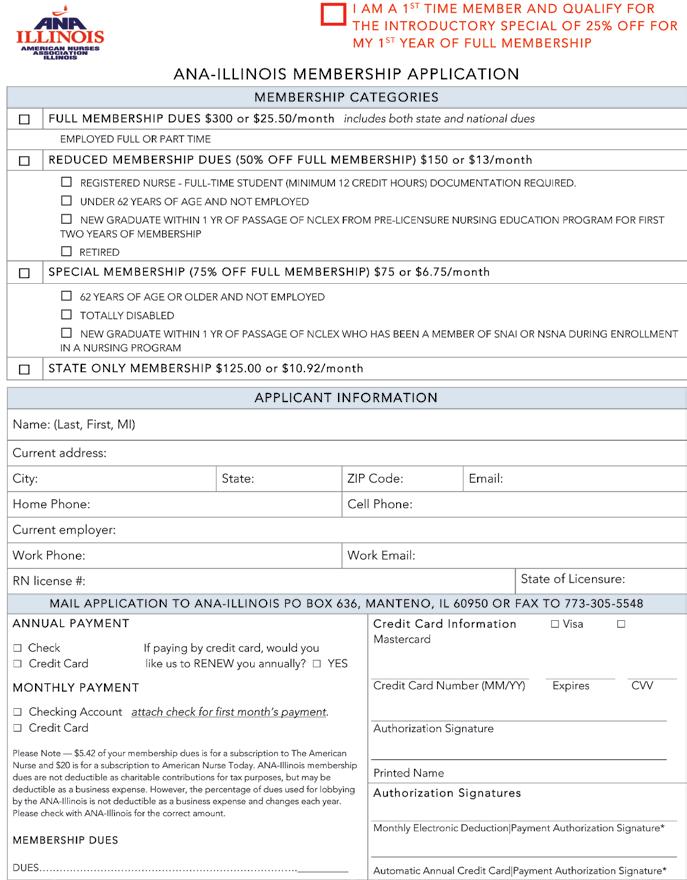


Assistant or Associate Professor –School of Nursing (Three Open Positions)
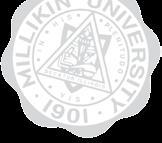
Millikin University invites applicants for the following positions in the School of Nursing. All applicants must be Registered Nurses in Illinois holding advanced degrees (MSN, Doctorate preferred). You may view a complete position description and qualifications for each position at www.millikin.edu/employment
Tenure track Assistant or Associate Professor, graduate programs. Graduate teaching position including coordination of research and project work for students in the DNP and MSN programs. Earned Doctorate and teaching/leadership skills required. Tenure track Assistant Professor, graduate and undergraduate programs. Teaching and leadership in graduate and undergraduate programs. Earned Doctorate, strong clinical skills and commitment to student success required.
Assistant Professor, graduate and undergraduate programs. Strong teaching skills and commitment to student success. Must demonstrate strong collaborative skills, ability to teach in diverse practice settings, with advanced practice in pediatrics preferred.
Please send letter of interest and curriculum vita to the attention of: Sheila Jesek-Hale, PhD, RN, Associate Professor Chair of Search Committee Millikin University, LTSC 124A, 1184
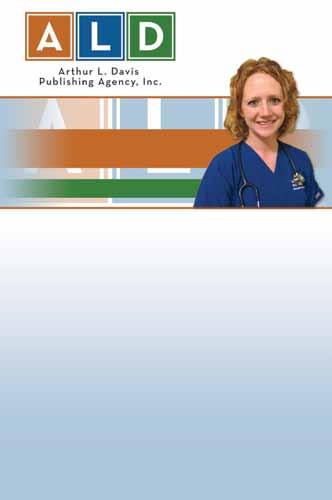

Are you seeking to further your nursing education?
We invite you to learn about the many opportunities Lewis University offers to continue your education at the bachelor’s, master’s or doctoral level. At Lewis, you’ll experience a supportive learning environment that helps you to achieve your personal and professional goals, while balancing work and family life.
Contact Us grad@lewisu.edu (815) 836-5610 www.lewisu.edu/nursing
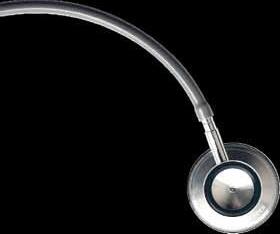
RN/BSN
MSN (also online)
• Healthcare Systems Leadership
• Nursing Education
Adult Gerontology Primary Care Nurse Practitioner (AGPCNP)
Family Nurse Practitioner (FNP)
MSN/MBA DNP
